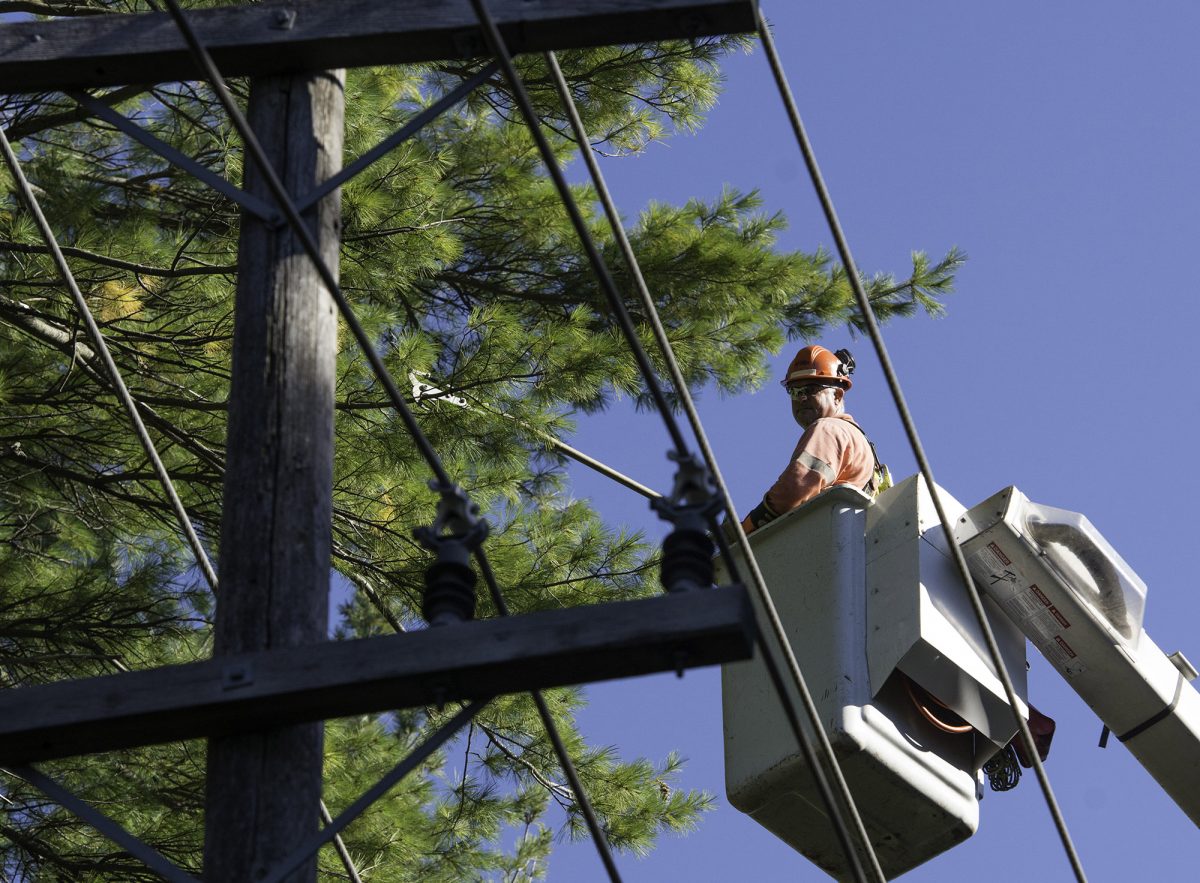
When tree limbs hit or fall on powerlines they may become energized, posing a risk to the safety of anyone nearby. They can also cause damage to powerlines, causing unplanned outages.
Our Forestry team works hard to ensure that trees and other plants growing near power lines do not cause any safety hazards or power outages for our customers. We carefully prune tree limbs to direct growth away from powerlines.
To properly maintain vegetation growth and keep trees away from powerlines, we schedule tree trimming for different areas within our service territory each year. All areas operate on a cycle to ensure we can maintain vegetation for all areas we service.
View the 2025 tree trimming map to see where Enova will be trimming trees in the City of Kitchener.
View the tree trimming schedule for the City of Kitchener, or the Township of Wilmot.
Sometimes strong winds or storms damage trees near overhead power lines. If you need us to trim or remove a tree that is hazardous to an overhead powerline complete the Forestry Service Call Request Form or call our Operations department at 226-896-2200.
Once the form is complete, we will arrange to see the affected tree(s) and recommend the type of work required. It is the responsibility of the tree owner to clean up and dispose of any branches and debris.
As a property owner, you are responsible for keeping the service wires on your property clear of trees or tall vegetation. For more information on your responsibilities as a homeowner, please see the Privately-Owned Powerline Assets handout or the Electrical Safety Authority’s Planting Under or Around Powerlines & Electrical Equipment resource guide.
You should make sure your trees and plants are regularly maintained and in good health. Inspect trees on a regular basis for damage and signs of decay, such as:
You can perform your own pruning as long as you keep yourself, your equipment and all parts of the tree at least three metres (length of two park benches) away from the power line. Overhead power lines can be dangerous.
Caution: One of the most frequent hazards with do-it-yourself tree trimming is controlling the direction tree branches fall when they are clipped. If a branch falls in the wrong direction, it could come into contact with a power line. Be mindful of power lines near your trees when you perform this work and pay careful attention to how the tree limbs fall.
To maintain the reliability, integrity and efficiency of the distribution system, we have the right to have unobstructed access to electrical distribution equipment, including but not limited to padmount transformers and switchgear, on private and public property at all times for inspection, repairs and maintenance.
If you are considering planting shrubbery around a pad-mounted transformer (the rectangular green boxes located near property lines), please note the need to keep as much open space as possible so our technicians can access the transformer for maintenance and repairs. Do not plant any vegetation other than turf grasses within 3.65 metres (length of three golf clubs) of the opening side of the box (where the padlock is located) as a clearance of 3 metres (length of two park benches) is required at all times on this side of the transformer. Labels are placed on all padmount transformers clearly illustrate the working clearances required around the equipment.
If there is a transformer on or near your property line, please note the following safety tips:
For more information and guidelines visit the Electrical Safety Authority website.

Please note the following changes to our office hours during the holiday season:
Wednesday, December 17 – closed from 11:30 am – 2:30 pm
Monday, December 22 – regular office hours 8:30 am – 4:00 pm
Tuesday, December 23 – regular office hours 8:30 am – 4:00 pm
Wednesday, December 24 – open from 8:30 am – 12:00 pm
Thursday, December 25 – closed
Friday, December 26 – closed
Monday, December 29 – regular office hours 8:30 am – 4:00 pm
Tuesday, December 30 – regular office hours 8:30 am – 4:00 pm
Wednesday, December 31 – open from 8:30 am – 12:00 pm
Thursday, January 1 – closed
Regular hours resume Friday, January 2, 2026.
Crews are ready to respond to all emergencies over the holidays.
Have a safe and happy holiday season, from all of us at Enova Power Corp.
Enter your address below to determine your service location for outage information, accessing forms and managing your account.
To better serve you, and make it easier for customers to find the information they’re looking for, we’ve introduced this helpful search tool that will allow you to find the rates, processes, and forms that apply to your account and your community. If you have additional questions regarding this, please email us at customercare@enovapower.com.